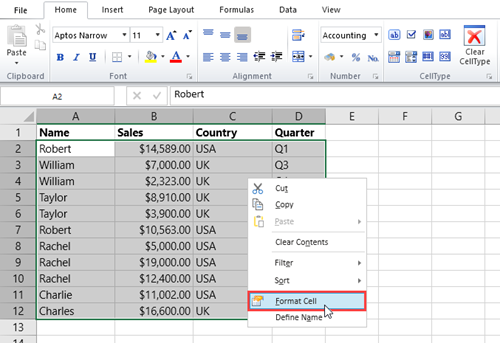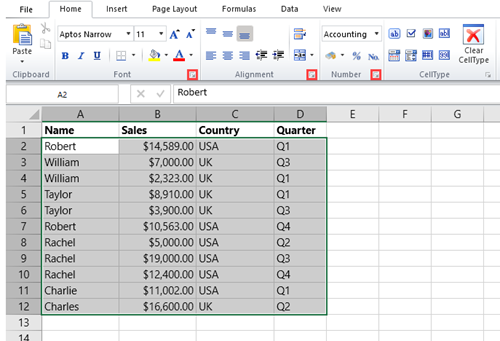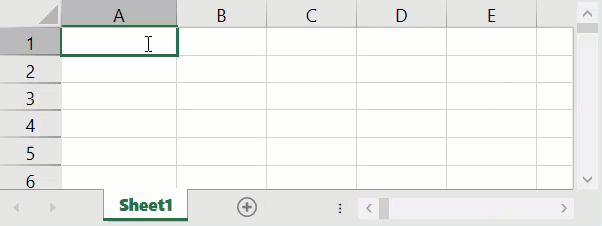Format Cells Dialog
The Format Cells dialog allows you to format the data displayed in a cell. It includes tabs such as Number, Alignment, Font, Border, Fill, and Protection, providing options to format text and numbers, adjust alignment, and customize border styles in the worksheet.
To access the Format Cells dialog, you can use any of the following methods.
Right-click on the cell in the worksheet and choose the Format Cell option from the context menu.

Or, select the cell in the worksheet and click on the
 icon from the Font, Alignment, or Number groups in the Home tab.
icon from the Font, Alignment, or Number groups in the Home tab.
The dialog below is displayed as a result of the methods mentioned above.

The Format Cells dialog provides the following tabs:
Tab | Description |
|---|---|
Number | Provides options to format numbers in cells like Currency, Accounting, Date, Time, Percentage, Fraction, Scientific, Custom, etc. |
Alignment | Provides options to customize the text alignment, indent, orientation, etc. |
Font | Provides options to change the font style, size, and color. |
Border | Provides options to customize the border style. |
Fill | Provides options to apply different styles and colors in cells like background color, pattern style, and color. |
Protection | Provides the option to protect the worksheet by locking the cell to prevent edits. |
Auto-Format Numbers
All the cells present in a worksheet are formatted as General by default. With this default formatting, a cell will display exactly what you type. However, if the cell format is set to General, it may automatically change to another format to fit the content within the current width of the cell. For example, if you enter a long number that is too long to fit in the cell, it may be converted to a scientific notation (a shorter form of showing large numbers).
!type=note
Note: Formatting cells only changes the visual appearance of the number, not its actual value.
The GIF below shows that if you enter "72940616670583" in a general cell, it can display as "7.29E+13" instead of the full number.

Additionally, if you see multiple hash symbols (#####) appear in a cell after you apply a number format, it usually means that the cell is too small to display the content in the selected format. You can simply increase the column width by dragging the right border or double-click on the right border to automatically resize the column to fit the content.


